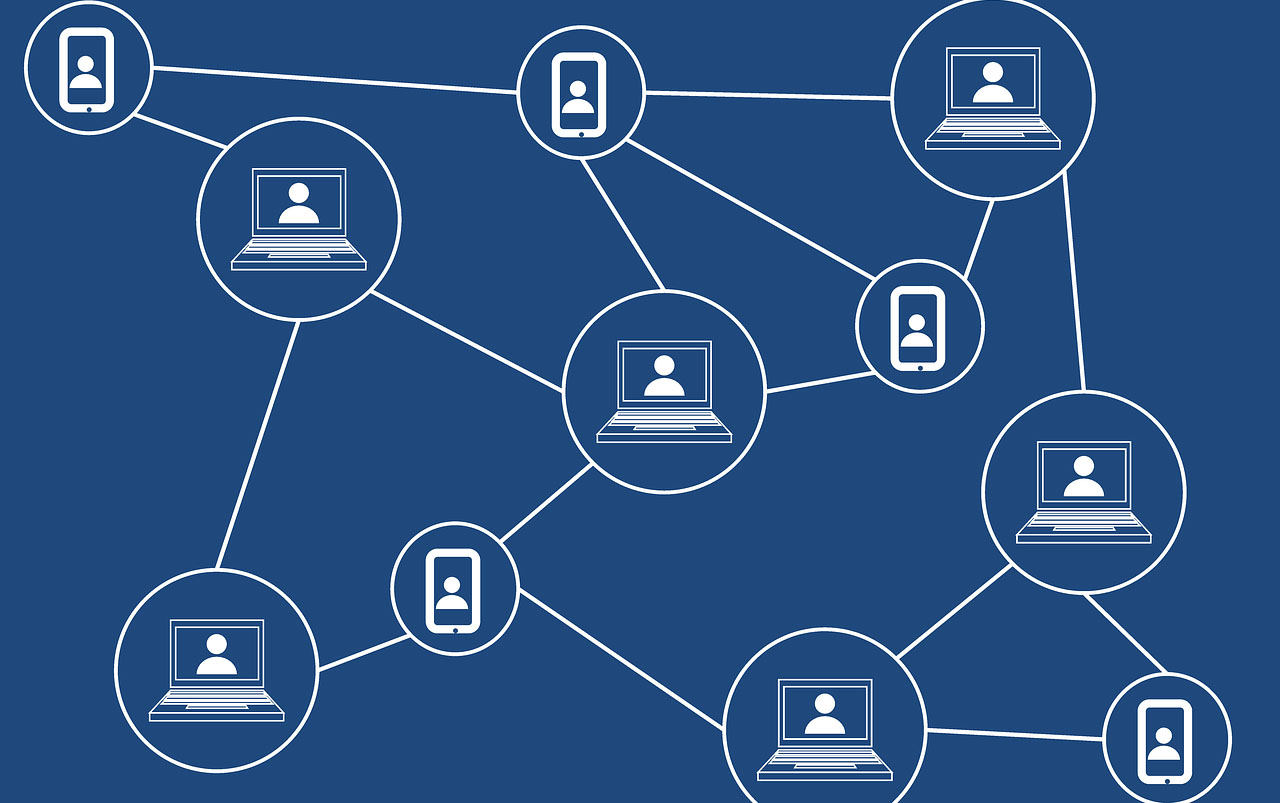The disruptive power of digital technologies has spread more slowly across the insurance industry than other financial services. This will not last much longer, and many insurance executives risk being caught by surprise by the drastic changes these advanced technologies will inspire.
What kind of change is coming? In life insurance, a U.S. company says it can help companies accept or reject new policies by analyzing selfies to determine an
applicant’s health. In other examples, advanced analytics can help fine-tune prices and segment customers more accurately; machine learning can present precise cross-selling opportunities; and digital interfaces can support single-event policies and purchases without any interaction with human agents.
Indeed, the first waves of disruption have already hit automotive insurance, where claims are being processed using smartphone apps and where online aggregators are leading buyers to the lowest-priced offers from a range of companies. Similar changes will unfold across all corners of the industry. Our experience shows that many executives in all branches of insurance are underestimating the disruption these technologies can bring, putting their companies at risk.
Early incursions into insurance
Change enabled by digital technologies will come from outside and within the industry. Attackers will find ways to snatch profits along vulnerable edges of the industry, while longtime players will refine their models, products and customer service to become more competitive.
Technology companies focused on financial services, known as fintechs, have grown rapidly in recent years. These fintechs moved first and aggressively into traditional banking services, giving many insurance managers a false sense of comfort.
In 2016, the market intelligence group VB Profiles reported that 1,329 fintech companies globally had together raised more than $105 billion and had a combined
market value of $870 billion. Of these, 356 specifically targeted banking and payments, 196 financing, 108 investments and just 82 insurance. The remainder focused on technology infrastructure, such as analytical and business tools, that could be applicable across sectors. VB Profiles also said that in 2015 insurtech companies that work directly on insurance innovations attracted investments totaling $2.2 billion, more than any other segment in its study. This is an ominous trend for traditional insurers, even though investment levels slid in subsequent years as companies focused more on product development than on raising funds.
Already, digital applications are scooping up profits at the periphery of the industry. Price-comparison websites, for example, scan the internet for car insurance prices and provide the data to users. A separate study by S&P Global Ratings found that almost two-thirds of new car insurance policies in the U.K. are being
sold through these sites. Another example from outside the core industry is single-trip cancellation insurance offered by online travel-booking companies such as Expedia, often underwritten by established insurers.
Insurers are also using digital technologies to cut costs, improve customer service and create competitive advantages. In the U.S., for instance, property and casualty insurer Allstate lets customers file claims on car accidents by submitting photos through its smartphone app. In an example of using new technologies to augment current practices, a large U.K. insurer gathers its internal data to make pricing and service decisions that take better advantage of a customer’s life-cycle value. A customer with several products, for instance, could automatically have claims processed faster or be offered favorable pricing on additional insurance products.
Three unstoppable forces
Three extraordinary forces—a cascade of data, advanced analytics and heightened customer expectations—make the flood of technological innovations seen today very different from advancements witnessed in recent memory. Handheld tablets introduced to agents may have improved efficiencies, but they had little effect on underlying business models or how sector profits were divided. These three forces will be different.
See also: 2 Paths to a New Take on Digital
Using auto insurance as an example, we’ve noted how price-comparison platforms have changed how customers shop. Soon, data automatically delivered from built-in sensors in cars and trucks will offer judgments on driving habits that could allow companies to raise or lower prices for individual clients with increased precision. The same sensors could also notify insurers of an accident, prompting the insurer to dispatch police, medical personnel or tow services; to send an automated drone to assess and film the situation; and even to arrange a rental car. All the while, the customer is updated on these actions over a smartphone app. Not only is customer service improved, but companies will also have immediate, concrete information on incidents, which could help prevent fraud, reduce costs and improve risk modeling.
Increased data
In 2015,
Forbes magazine
noted that more data had been created in the previous two years than in the prior entire existence of mankind and that only a tiny portion of that data — about 0.5% — is analyzed or mined for value. This data is generated constantly: tens of thousands of Google searches every second, tens of millions of Facebook messages every minute and, soon, 50 billion smart devices connected globally, composing the Internet of Things, among other sources.
Insurances companies that harness this data can make better decisions, improve customer service and even prevent claims in the first place by, for instance, advising clients on healthier lifestyles or safer driving habits. Used properly, this cascade of data is the raw material needed for a more precise risk assessment on every single policy and for early warnings of any anomalies.
If neglected, this trove of data is also a threat to established insurance companies. For example, a digital giant such as Google or Facebook could use its rich deposit of data to target the most attractive customer segments with tailored insurance offers that would be difficult to match in terms of personalization. Or, a major automaker could leverage data already arriving from sensors to strike an exclusive relationship with a single provider, closing a significant portion of the market off to others. Such a move is plausible as self-driving cars are perfected and as carmakers themselves seek ways to protect their own profits as the economic value in the auto industry moves from manufacturing to software.
Advanced analytics
While the data stream has swollen significantly recently, companies have been capturing data from their customers for years, often without extracting optimal value. Recent advances in analytics and predictive analysis, however, make it easier for companies with technological expertise to find value in these terabytes of data.
Advanced analytics can provide better risk profiles of customers using data from a wide range of sources, from social media activity to public databases relevant to specific locations or occupations. The analytics also open the door for technology startups to target especially attractive customer segments or create targeted products, such as nascent “gadget insurance”—policies that cover just a laptop, tablet or smartphone rather than an entire household and its contents.
Analytics can also help perfect pricing and customer-service policies. For instance, advanced analytics can be used to present promotions that would be attractive to a specific client based on how a large pool of other customers responded to the promotion. Analytics could also flag new opportunities, such as when a client’s children have reached a life stage when they might need their own policies.
Customer expectations
In the digital age, customers are becoming accustomed to highly personalized products and services. These customers, especially digital natives who grew up with the internet and represent the new generation of insurance buyers, expect Amazon, for instance, to suggest items based on their previous purchases and to be able to pick exact seats when buying concert tickets online. They expect immediate access to their banking information over their smartphones and have little patience for elaborate sales pitches.
Such expectations cannot be satisfied by simply migrating traditional offers to a website or mobile platform. Customers want to have a choice between, say, purchasing a standard auto insurance policy or picking and choosing from among modules, such as roadside assistance and rental-car replacement, rather than an online brochure that touts traditional products.
As an extension of closer customer relationships, some insurance companies are using new technologies to offer preventive programs, which deliver clear benefits to both policyholders and insurers. For example, insurer Discovery in South Africa runs the Vitality wellness program, which predates the digital era and has been updated with new technology. Vitality applications allow the company to encourage customers to frequent gyms, eat healthily and improve their driving habits. Hospitalization costs for program participants are
as much as 30% lower than for nonparticipants, and participants live 13 to 21 years longer than other insured groups do. Similarly, IAG in Australia uses claims data to identify dangerous road segments, alerting customers as they approach these hazardous zones and working with governments to correct them. The company says a single improved highway ramp can save AU
$600,000 (U.S. $470,000) a year in claims.
Implications span crucial areas
The exact implications of new digital technologies on insurance are difficult to foretell. Innovations in the financial services sector, in general, have been dynamic, and there is every reason to believe that these technologies will have a similar wide-ranging impact as they embed themselves into the insurance sector.
Broadly, four areas can expect the greatest disruption.
Customers
A clear understanding of changing customer expectations is essential to take full advantage of new technologies. For many companies, this means adjusting product and service portfolios to cater to customer wishes, rather than presenting the same set of rigid offerings that have sold well in the past. Companies that use big data and advanced analytics to better understand their customers and agile product development to cater to these new needs rapidly will have a better chance of thriving in the digital environment.
In one example, a growing number of private clients are participating in the sharing economy using platforms such as Airbnb for properties and BlaBlaCar for shared rides, and they need relevant policies to protect against damage and liabilities under these new circumstances. Unlike traditional policies, such products might cover only clearly limited periods or specific situations.
Customer experience also has greater importance. While good experiences may not always outweigh price, especially as comparison websites reach more broadly into the industry, bad experiences, such as complicated site designs or claims processes, can easily send customers to rival offerings. In one example, a large U.K. insurer processes claims quickly, often within seconds, for customers whose data shows they are long-time clients who meet certain criteria, such as owning several products or having few past claims.
Products and prices
Companies will have to reexamine their product and service portfolios, taking into account evolving customer expectations, insights generated by advanced analytics and aggressive maneuvers from attackers. For example, insurers will have to find ways to deconstruct homeowners’ policies. Rather than insuring the entire contents of a home against theft or damage, specially designed policies could cover only selected items, such as computer equipment or musical gear. Products for individual events, such as travel or leisure activities, should also be expanded.
Using new technologies, products can also be developed for customers who might be otherwise unattractive or too costly to serve. For example, in agricultural insurance, remote sensors could provide an insurer with pertinent information on soil conditions, temperatures, humidity and other factors for remote farms. Crop insurance claims from a drought or other natural calamity could be more quickly and efficiently processed using primarily this data, rather than waiting for an expensive visit by an adjuster.
Insurance companies must also use technology to keep prices competitive while preserving profit margins. Looking at car insurance,
S&P noted in 2016, “Insurers that do not find their quotes in the top five places on a [price-comparison website] may struggle to gain new business, no matter the quality of their product offering and service.” Among other measures, deploying new technologies to partially or fully automate processes such as application processing and claims payments can be especially effective in reducing back-office costs.
The potential for increased transparency into client lifestyles and habits will also affect policy pricing and risk assessments. Although privacy concerns are still being addressed, sensors on smartphones and wearable fitness gadgets, for instance, could provide data that allows insurers to reduce premiums for clients who lead healthy and active lifestyles. In a similar vein, sensors inside vehicles can provide automotive insurers with valuable information on an individual’s driving habits. Increased use of this data, however, also leaves insurers open to the risk of customers hacking into these devices and sensors to present erroneous favorable data.
IT systems
For many established insurance companies, legacy computer systems are not up to the task of compiling and analyzing the massive amounts of data that feed these new technologies. These systems often lack the flexibility and speed needed to cater to today’s customer needs and to keep pace with industry attackers.
To face this challenge effectively, many companies have developed a two-pronged IT approach. Processes that don’t require the strengths of new technologies, such as accounting and fraud management, remain the province of legacy systems, while social media, customer service, product development and process automation, among others, are handled by updated systems. For most companies, investments in new systems will be required to meet these needs.
Among recent IT breakthroughs, blockchain technologies, which essentially provide a shared digital ledger that no individual controls, are being scrutinized for potential opportunities. Fifteen insurance companies, including Allianz, Munich Re and Swiss Re, have joined in a pilot program called the Blockchain Insurance Industry Initiative B3i to “explore the ability of distributed ledger technologies to increase efficiencies in the exchange of data between reinsurance and insurance companies,”
according to an Allianz statement. Blockchain technology has particular potential in transaction validation and fraud prevention.
Business models and risk
As we’ve seen, advanced technologies deployed within the industry can support new business models, from gadget insurance to intricate pricing approaches. These technologies deployed in other industries could also disrupt business models. Consider the example of self-driving cars. Once they are in common use, the liability for any accident could shift from human drivers to manufacturers, bringing insurance into the suite of services offered by manufacturers in the overall ecosystem. Maintenance of software and mechanical systems could become more crucial to reducing risks, compelling insurers to collect data from service providers to help assess and manage these risks.
Similarly, home insurers could gather data from utilities using smart meters and other sources to monitor the risk of fire or flood and dispatch warnings and instructions to mitigate risk to clients as necessary. In the U.K., home insurer Neos, founded in 2016, offers its customers a policy that includes a suite of smart-home sensors that alert the homeowner and the company if, say, a door is left open or the plumbing leaks. Neos also offers to arrange the necessary repairs.
See also: Finding Value in Insurtech (Part 1)
While the availability of such data can help assess policy risks more accurately, it also creates internal risks that must be understood and managed. Perhaps the biggest issue revolves around privacy questions, especially as companies gather data from a variety of external sources to create customer profiles and inform pricing decisions.
For example, one U.K. insurer is considering a program in which potential customers are given policy quotes with virtually no questions being asked. Instead of the usual long list of questions, the insurer would use the mobile number of the incoming call to identify the caller, find an address and compile various data related to the caller’s lifestyle and risk. The call-center agent would then offer an immediate quote for the desired policy. However, similar programs from other insurers that tapped into social media activities were met with protests over privacy concerns and had to be discontinued.
Talent brings it all together
To make the most of these advanced technologies and remain competitive, insurers will require new talent and new capabilities. The technology itself is readily available; assembling the talent needed to extract the greatest value from digital advances will be the crucial element that sets a company apart from its competitors.
The talent insurers want — and where to find them
Most insurers seek digital hires with capabilities in data analytics, digital apps, the Internet of Things, the habits of digital natives and other comparable areas. A natural first stop to find such talent would be the broader financial industry, especially banks, which have a head start on insurers in addressing these changes (and also have familiarity with operating in a highly regulated industry). Hires from banks and other financial services companies are likely to experience less culture shock than would those from outside the financial industry, but insurance companies must be ready to pay for this scarce talent. Recruiting from further afield will be more difficult, although necessary.
Forward-looking insurers also prize meaningful international experience—a common gap in the resumes of otherwise high-flying, U.S.-based digital executives, who tend to have spent little time managing outside their home territory.
Finders, keepers
Of course,
finding digital leaders is only half of the equation. The insurance companies most successful at transforming themselves will also prioritize employee retention. This is easier said than done, given the insurance industry’s reputation as a stodgy work atmosphere. Potential cultural clashes and generational gaps between young talent and older insurance executives must be recognized and addressed. Indeed, cultural clash may be the most difficult obstacle in recruiting and retaining the top talent needed to exploit new digital technologies.
As banks have discovered, top hires with technology backgrounds expect a fast-paced, innovative environment, or they will take their in-demand talent elsewhere. One way that insurers seek to bridge the cultural divide is to set up separate innovation centers that mimic the digital “hothouse” environments found in technology or
other fast-paced industries. Such models can work—and work well—but only when senior leaders are purposeful about attacking the perennial management challenge these approaches bring: transferring any insights generated in the incubator to the core business and integrating them into its day-to-day operations. Executives who expect this to simply happen of its own accord will be sorely disappointed.
In the end, we find that the most powerful approach to keeping digital talent engaged is deceptively simple: make sure that company leaders—starting with the CEO—do their utmost to instill a sense of purpose in the work of the transformation itself. To be sure, perks and pay matter, but when digital leaders feel a genuine commitment to change, they are far more likely to stay the course, despite the inevitable culture clashes and other growing pains. Seeing a meaningful commitment to innovation and responsiveness from company leadership goes a long way to engaging and retaining digital talent.
When in doubt, partner up
In most circumstances, partnerships will also be needed to fill capability gaps. Insurance companies will have to collaborate with a range of technology companies, rather than relying on a small set of providers. In the process, the role of the chief information officer (CIO) will evolve to encompass a greater emphasis on managing a vast ecosystem of diverse vendors and partners as well as in-house innovations and proprietary systems. The shift will be complemented by other organizational changes, such as the creation or promotion of chief data officers or chief digital officers, to help maintain the right balance.
For optimal impact, companies cannot pick and choose among these approaches to talent but rather must incorporate each model. Internal talent development, new hires and strategic partners must all be brought into the mix for the best results. Like all transformational efforts, success is largely reliant on top-level support and enthusiasm. CIOs and other senior executives must work toward an ideal balance of new capabilities and hard-won industry knowledge. Processes and structures must be adjusted.
This will require a mix of new and old change-management skills, with communication a central component. One British insurer established a task force to disseminate the new digital culture and language throughout its global organization. As part of the transformation, an initial group of 30 “ambassadors” was responsible for explaining the changes broadly, and each recruited 10 new ambassadors to bring the message deeper within the organization.
***
Outside innovators and leaders within the insurance industry are already looking carefully at the risks and opportunities posed by new technologies. Like those already witnessed in the banking industry, disruptions are likely to move quickly through the insurance sector, affecting everything from customer service and products to back-office processes. The key to capturing the value of these new technologies will be digital talent, which is already scarce. Companies that wake up and move now will have a much better chance for succeeding in this new environment.


















